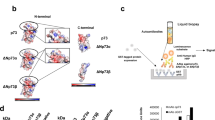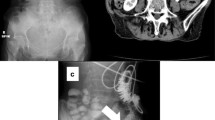Abstract
Genomic alterations in the p53 tumour-suppressor gene and overexpression of p53 protein, resulting from gene mutations, are frequently found in pancreatic cancer. In this study we analysed the sera of 160 patients with malignant and benign pancreatic diseases for the presence of circulating antibodies to the p53 protein. The analysis of the sera was performed using two different enzyme-linked immunosorbent assay (ELISA) systems. To further substantiate the results, all sera were analysed by the Western blot technique using a cell lysate of PancTu-1 cells (p53 mutation at codon 176) as antigen source. Additionally, all positive sera were analysed by the Western blot technique using recombinant p53 as the antigen source. Although the rate of p53 mutations in pancreatic tumours is of the same order as in other adenocarcinomas (> or = 50%), an antibody response was found in only 5/78 (6.4%) sera from patients with pancreatic cancer. Two out of 82 (2.4%) sera of patients with benign pancreatic diseases were clearly positive for p53 antibodies. One additional specimen was weakly positive, i.e. only in one ELISA and Western blot system.
Similar content being viewed by others
Author information
Authors and Affiliations
Rights and permissions
About this article
Cite this article
Marxsen, J., Schmiegel, W., Röder, C. et al. Detection of the anti-p53 antibody response in malignant and benign pancreatic disease. Br J Cancer 70, 1031–1034 (1994). https://doi.org/10.1038/bjc.1994.443
Issue Date:
DOI: https://doi.org/10.1038/bjc.1994.443
- Springer Nature Limited
This article is cited by
-
Serum antibodies to EpCAM in healthy donors but not ulcerative colitis patients
Cancer Immunology, Immunotherapy (2006)
-
Titration of serum p53 antibodies in patients with gastric cancer: a single-institute study of 40 patients
Gastric Cancer (2005)
-
The role of anti-p53-autoantibodies in pancreatic disorders
International journal of pancreatology (1996)




